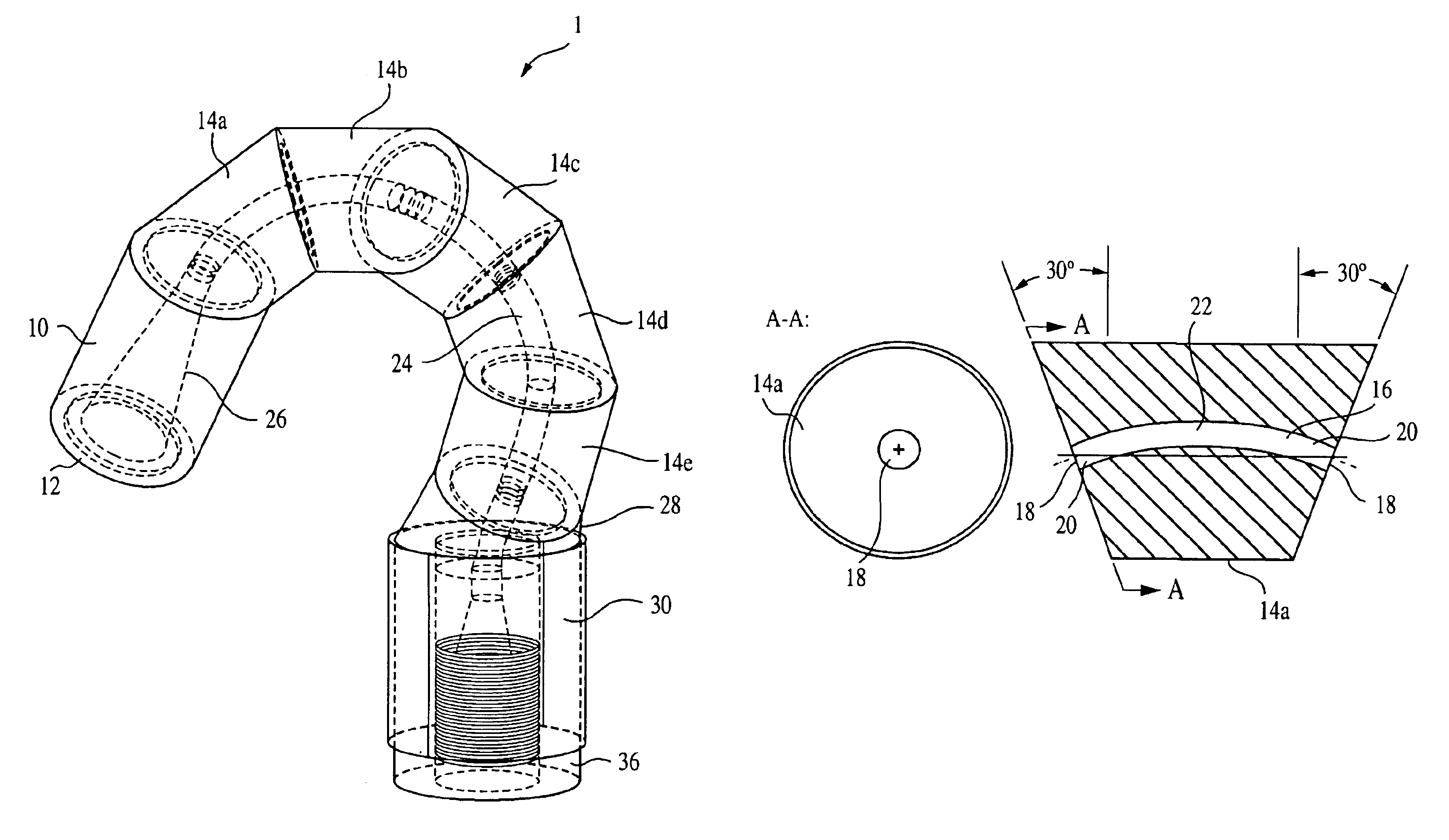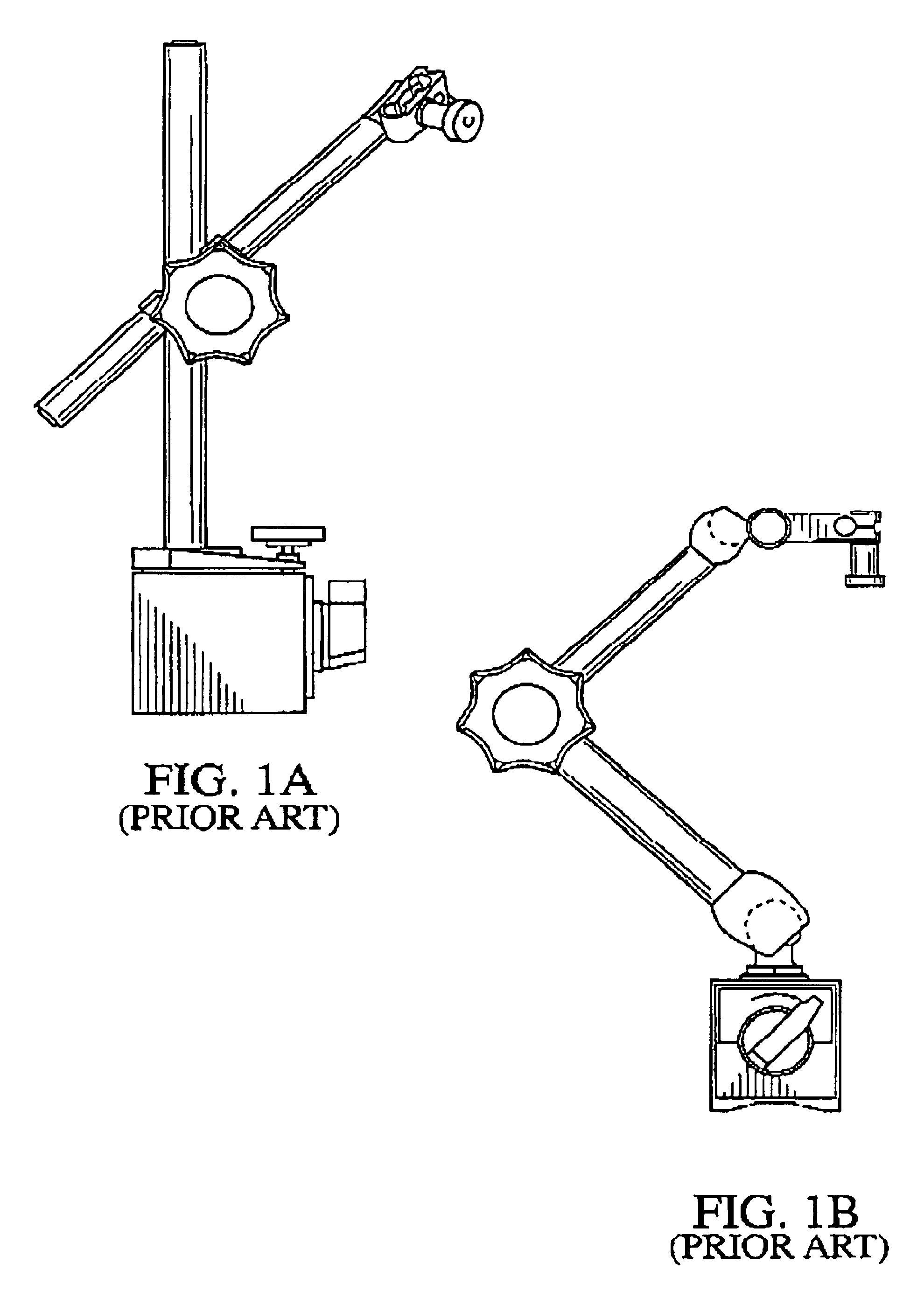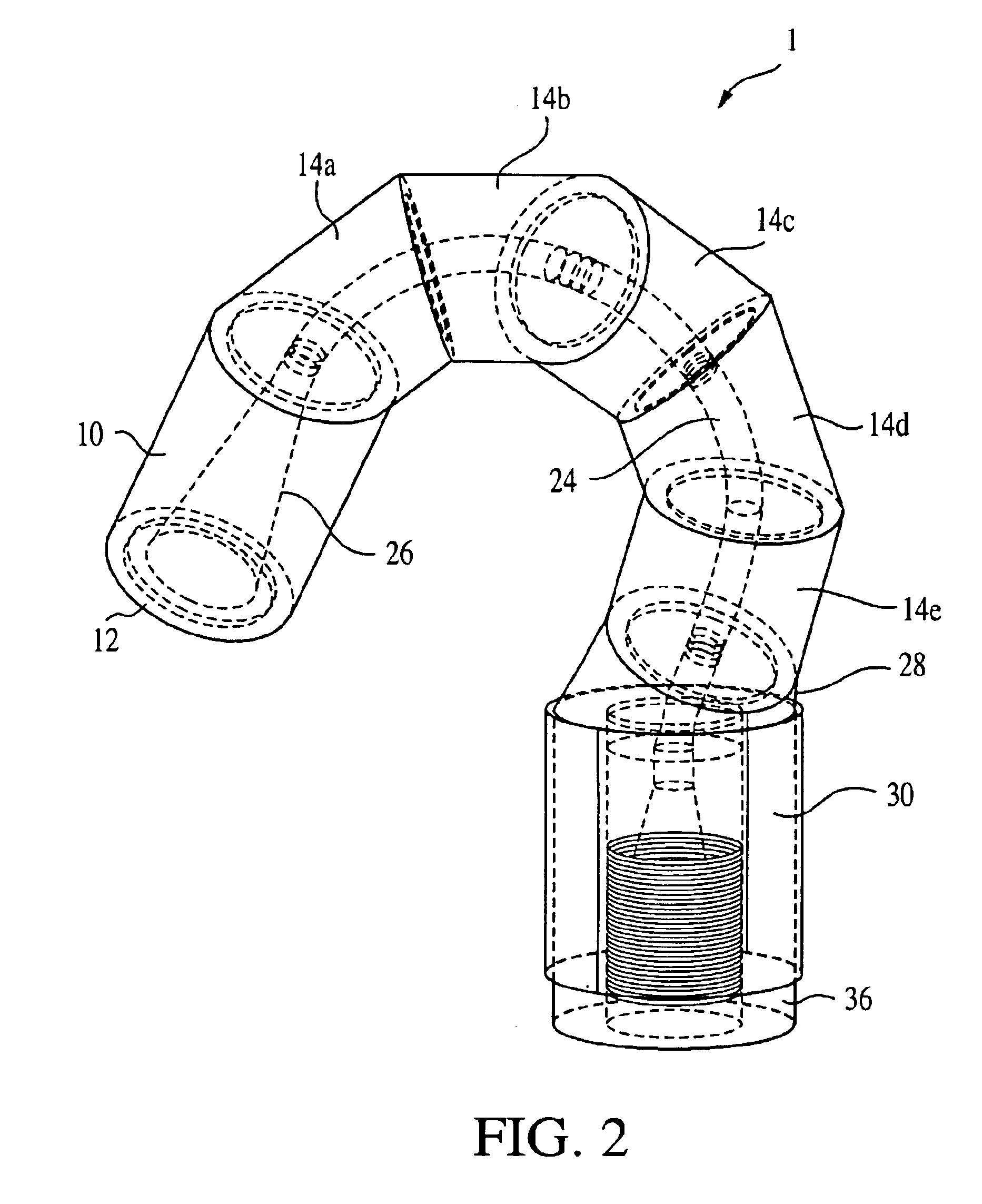Medical imaging environment compatible positioning arm
a technology of positioning arm and medical imaging environment, which is applied in the direction of machine support, application, surgical instrument support, etc., can solve the problems of increasing the difficulty of independent locking of all of the additional joints of such a device, the difficulty of adjusting the inability to adjust the position of the positioner, etc., to achieve the effect of convenient and convenient means of locking and greater flexibility in the movement of the workpi
- Summary
- Abstract
- Description
- Claims
- Application Information
AI Technical Summary
Benefits of technology
Problems solved by technology
Method used
Image
Examples
Embodiment Construction
Before explaining at least one embodiment of the present invention in detail, it is to be understood that the invention is not limited in its application to the details of construction and to the arrangements of the components set forth in the following description or illustrated in the drawings. The invention is capable of other embodiments and of being practiced and carried out in various ways. Also, it is to be understood that the phraseology and terminology employed herein are for the purpose of description and should not be regarded as limiting.
For most medical imaging applications (e.g., X-ray. MRI, ultrasound), the present invention generally relates to positioning devices that are made with materials that have low magnetic susceptibility and produces minimal, if any, magnetic fields. For example, materials such as plastics (e.g., polyetherimide, kevlar, nylon), glass, ceramics, rubbers, etc.
MRI has become the preferred method for high-resolution soft-tissue imaging for pre / p...
PUM
 Login to View More
Login to View More Abstract
Description
Claims
Application Information
 Login to View More
Login to View More - R&D
- Intellectual Property
- Life Sciences
- Materials
- Tech Scout
- Unparalleled Data Quality
- Higher Quality Content
- 60% Fewer Hallucinations
Browse by: Latest US Patents, China's latest patents, Technical Efficacy Thesaurus, Application Domain, Technology Topic, Popular Technical Reports.
© 2025 PatSnap. All rights reserved.Legal|Privacy policy|Modern Slavery Act Transparency Statement|Sitemap|About US| Contact US: help@patsnap.com



